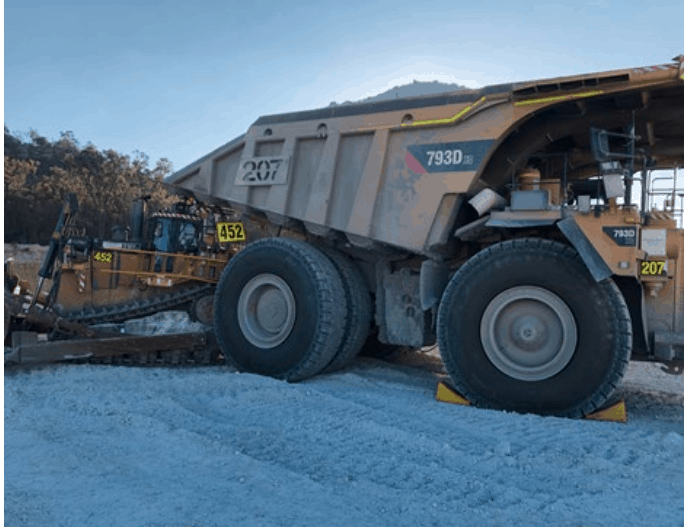What does a bad day look like? Dump Truck Collision Story

A dump truck collision with a dozer at a NSW (New South Wales) coal mine has been reported by the NSW Resources Regulator.
According to the Regulator, a dump truck collision occurred when a haul truck interacted with a dozer on a dump at the Mangoola open cut coal mine on October 5, 2020. As a result of the collision, the dozer operator sustained injuries and was transported to hospital.
The accident occurred at about 9 am on Monday October 5, 2020. An experienced dozer operator was working on a tip head. A truck operator arrived at the tip head and was unsure where to unload but recalled an earlier instruction from the dozer operator to tip against the wall. The truck operator reversed to dump the load. The truck operator heard a thud and stopped the truck. The haul truck and dozer had collided.
The haul truck operator had 11 weeks industry experience and 4 weeks experience at the mine. The dozer operator sustained soft tissue injuries and was transported to hospital for medical review.
The NSW Resources Regulator is investigating to determine the cause and circumstances of the dump truck collision incident
The investigation will, among other things, consider communication between the operators, training and supervision, as well as adequacy of policies and procedures relevant to the incident.
The mine operator is cooperating with the investigation. A report will be published when the investigation is conclude.
Safety observations
Mine and petroleum site operators have a duty to identify hazards and manage risks to health and safety associated with the operation of mobile plant in accordance with the provisions of the Work Health and Safety Act 2011 and Work Health and Safety (Mines and Petroleum Sites) Act 2013 and Regulations.
Mobile plant interactions in mines is a well-known risk.
Mine operators should:
- ensure that positive communications (pos-coms) is effective between operators when haul trucks are approaching dozers working on tip heads
- engineering controls, such as proximity detection, collision avoidance systems and cameras can assist in managing the risks associated with mobile plant interactions
- review the adequacy of surface transport management plans including tip head procedures for effective radio and communications protocols
- ensure the risk controls for mobile plant interaction are being adequately monitored and verified by audit as being effective.
This incident is from Australian Mine Safety Journal.



